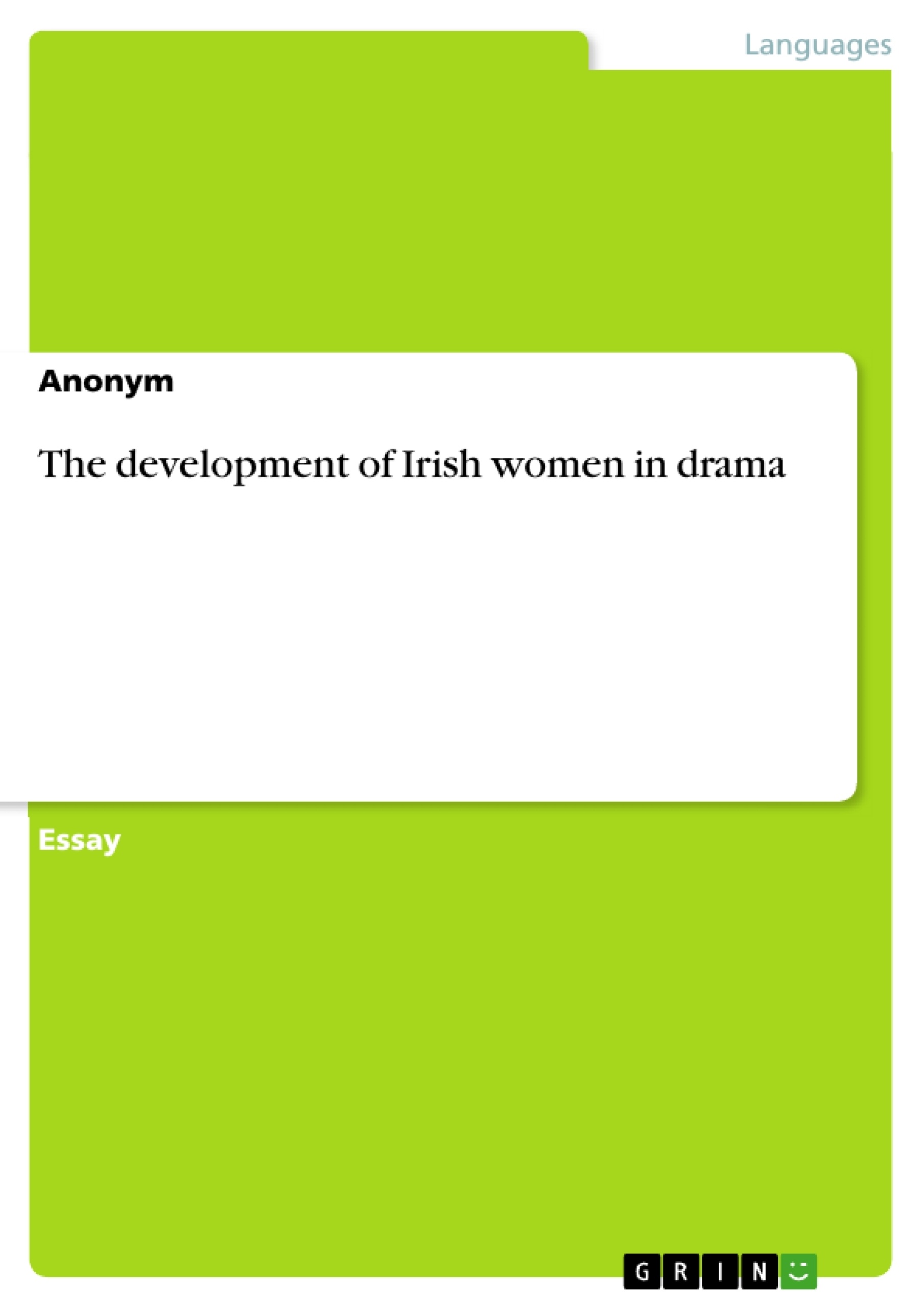Even though the role of Irish women was bounded to home and family, they were seen as a symbol for Ireland’s struggle for independence. This phenomenon is also expressed in the development of the role of women in Irish drama.
This essay will examine the evolution of the idea of the Irish woman by comparing the different types of women presented in selected Irish plays, including "Cathleen Ni Houlihan" by W.B. Yeats, "The Playboy of the Western World" by J.M. Synge and "Juno and the Paycock" by Seán O´Casey.
In order to analyse the plays it is necessary to provide biographic information about the playwrights. The comparison of the plays requires a short introduction to their plot regarding the main female characters and their analysis. The evolution of the Irish women shall be discussed in the conclusion with reference to the presented plays.
Table of Contents
- Introduction
- Cathleen Ni Houlihan
- Biographic Information of W.B. Yeats
- The Plot and the Characters
- The Analysis of Cathleen Ni Houlihan
- The Playboy of the Western World
- Biographic Information of J.M. Synge
- The Plot and the Characters
- The Analysis of The Playboy of the Western World
- Juno and the Paycock
- Biographic Information of Seán O'Casey
- The Plot and the Characters
- The Analysis of Juno and the Paycock
- Conclusion
Objectives and Key Themes
This essay aims to examine the evolution of the idea of the Irish woman by analyzing the presentation of female characters in three classic Irish plays: Cathleen Ni Houlihan by W.B. Yeats, The Playboy of the Western World by J.M. Synge, and Juno and the Paycock by Seán O'Casey.
- The portrayal of Irish women in Irish drama
- The relationship between Irish women and the struggle for independence
- The different types of women presented in the plays
- The impact of social and historical context on the portrayal of women
- The evolution of the concept of the Irish woman through the three plays
Chapter Summaries
The essay begins by discussing Cathleen Ni Houlihan, highlighting the contrasting representations of women within the play. Bridget and Delia, rooted in domesticity and material concerns, are contrasted with Cathleen Ni Houlihan, a symbolic figure representing Ireland herself. The play explores themes of sacrifice, the power of myth, and the role of women in shaping national identity.
The Playboy of the Western World delves into the portrayal of two contrasting yet relatable Irish women: Pegeen and Widow Quinn. Pegeen embodies a mixture of rebellious spirit and societal constraints, struggling to break free from traditional roles while still seeking validation from male figures. Widow Quinn, on the other hand, showcases a more independent personality, demonstrating a defiance of societal expectations. The play examines themes of love, freedom, and the limitations imposed by social norms on women.
Finally, the essay examines Juno and the Paycock, highlighting the strong and practical nature of Juno, a woman who navigates the complexities of life during the Irish Civil War. The play contrasts Juno with the lazy and irresponsible characters of her husband and son, showcasing the strength and resilience of women in the face of adversity. Themes of class, poverty, and the societal expectations placed on women are explored through the characters and their interactions.
Keywords
The essay delves into the portrayal of Irish women in Irish drama, analyzing key themes such as national identity, social roles, gender dynamics, and the evolution of the concept of the Irish woman. It focuses on the works of three prominent Irish playwrights: W.B. Yeats, J.M. Synge, and Seán O'Casey, examining how their plays reflect the changing social and political landscape of Ireland.
- Quote paper
- Anonym (Author), 2015, The development of Irish women in drama, Munich, GRIN Verlag, https://www.grin.com/document/457546



